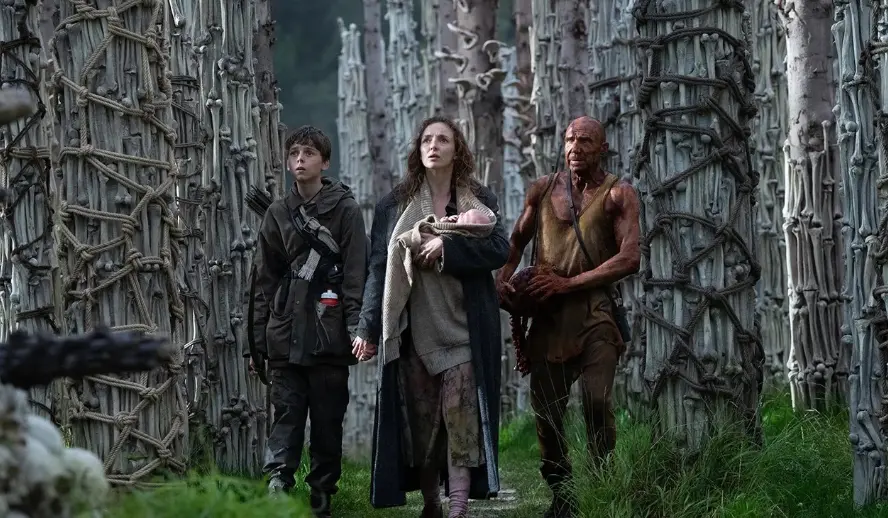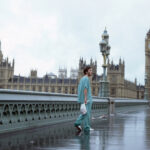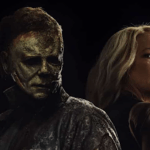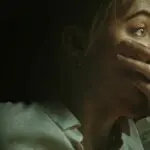‘28 Years Later’ offers a stark, emotional continuation of one of modern cinema’s most influential horror trilogies. With the release of the third film in the franchise, I’d like to examine the zombie film’s legacy, cultural impact, and director Danny Boyle’s vision of a society forever changed.
‘28 Days Later’ – The Beginnings of an Iconic Horror Franchise
‘28 Days Later’ not only marked an emergence in the style of the post-apocalypse film, but it also signalled the rise of a low-budget horror genre that would mark the next decade of filmmaking. Shot entirely on a Canon XL1 digital video camera, the grainy, digital look makes some images almost comprehensible. The 2001 film opens in a primate research facility; the attendant shouts, “The chimps are infected” with “rage.” Cut to– Cillian Murphy’s Jim, awaking in an abandoned hospital, nude, with his half-shaved head revealing a large scar. 28 days later. He wanders into the abandoned streets of London. The digital visuals make the abandoned streets of London glare bright and horrific. By shooting early on Sunday mornings, director Danny Boyle was able to pull off the deserted London streets with smart, guerrilla filmmaking techniques. The yellows are stark and queasy, and a scrubs-clad Jim wanders through them like a beacon, the last surviving remnant of London.
Things to do:
- Subscribe to The Hollywood Insider’s YouTube Channel, by clicking here.
- Limited Time Offer – FREE Subscription to The Hollywood Insider
- Click here to read more on The Hollywood Insider’s vision, values and mission statement here – Media has the responsibility to better our world – The Hollywood Insider fully focuses on substance and meaningful entertainment, against gossip and scandal, by combining entertainment, education, and philanthropy.
“The End is Extremely F***ing Nigh,” says the wall of the church Jim wanders into. A pile of corpses appears like an oil painting. After getting attacked by an infected priest, Naomie Harris’s Selena hacks her way onto the scene, and after losing her survival partner, joins Jim as they look for safety. Brendan Gleason and Megan Burns fill out the cast, and the group travels out of the deadly city and towards the country, looking for salvation. What transpires is a bipolar mix of gruesome, quick-cutting violence and interludes where the foursome find joy in the apocalypse. The film looks for a reason to continue to live, beyond survival. For love, family, and hope. Christopher Eccleston and his band of army men add a third act twist that is a hunting indictment of a society in turmoil. The score throughout is thumping and modern, but the film’s score is silent, and the sound design is blunt during acts of violence that bring viewers back to the film’s reality. Brendan Gleason is the standout of the film, the heart of the narrative, as he adopts a fatherly role for not only his daughter but the two young survivors he adopts into his orbit.
WATCH THE TRAILER of the Film and the Revolution: ‘Can I Go Home Now?’
The Children Around the World Continue to Ask the question
‘28 Weeks Later’ Widens the Horror Universe
While ‘28 Weeks Later’ expands the world introduced in Danny Boyle’s original film, it does so with a distinctly different tone and style. Directed by Juan Carlos Fresnadillo, the 2007 sequel swaps the guerrilla intimacy of ‘28 Days Later’ for a sleeker, more militarized spectacle. Though I admire the film’s ambition, especially in its decision to depict the moral and logistical failures of NATO’s reoccupation of Britain, I never quite connected with it. The emotional core feels thinner, despite a strong cast including Rose Byrne, Jeremy Renner, and Imogen Poots. Robert Carlyle’s early arc offers a compelling, brutal moral failure, but after that, the film leans heavily on set-piece destruction and loses some of the humanity that made the original so gripping. Still, there are flashes of success: the opening cottage sequence is genuinely terrifying, and some visual moments, like the night vision chase through London’s darkened tunnels, linger in the memory. ‘28 Weeks Later’ may not match the radical originality of its predecessor, but it does offer a chilling reminder that rebuilding is just as fragile as survival. While Danny Boyle served as executive producer on the film and even stepped in to direct some sequences, the film feels like quite a departure from his grainy, haunting original.
Related article: – Want GUARANTEED SUCCESS? Remove these ten words from your vocabulary| Transform your life INSTANTLY
Related article: 10 Post-Apocalyptic Movies Everyone Should Watch

‘28 Years Later’ Asks Life’s Worst Questions… While in a Zombie Apocalypse
‘28 Years Later’ opens on a near-familiar domestic scene– a group of children watching ‘Teletubbies’– but a dissonant tone takes over. Screams are heard in the background. The children’s eyes widen with recognizable terror. Infected burst into their home and massacred the family, with only one surviving child running into the local church. His father, the pastor, believing the plague to be a sign of divine judgement, accepts his mauling with open arms. 28 years later, the survivors are forced to make a home in a post-apocalyptic hellscape.
Aaron Taylor-Johnson’s Jamie raises young newcomer Alfie Williams’ Spike, trying their best to care for Jodie Comer’s Isla, who has fallen ill in a world with no surviving doctors. Spike and Jamie embark from their remote, fortified Scottish island for a coming-of-age hunt, and audiences are shown the new, evolved world of the infected, 28 years after Cillian Murphy’s Jim traversed an abandoned London. Spike’s first “hunt” of infected is shot with a shaky handheld camera that immerses one in the world, and quick cut shots make Spike’s youth and aversion from brutality all the more apparent. Intercut with old film footage of medieval warriors sending volleys of arrows, Boyle threads the line between interpersonal violence before and after the plague, stressing again the iconic line from the original film, it has always been just “people killing people.”
Related article: EVOLUTION: Every Ryan Gosling Role From 1995 to 2020, All Performances Exceptionally Poignant
Related article: EVOLUTION: Every Henry Cavill Role From 2001 to 2021, All Performances Exceptionally Poignant
Related article: Films That Go Bump in the Night: The 10 Best Horror Classics of the Last 100 Years – Hollywood Insider
The woods are imposing, made even more terrifying by intercut footage of infrared night vision shots of swaths of infected. The infected have resorted to eating worms from the dirt; because of an inflated budget, the makeup and visual effects heighten the action and deepen the tension. Shot entirely using iPhones (by using a rig that could hold 20 iPhone Pro Max cameras), the film is as shaky as it is crisp, allowing the crew to shoot from multiple angles simultaneously and move through the harsh terrain with ease. The midpoint sees the young Spike venture off onto the mainland with his ailing mother, plagued by piercing headaches and memory lapses. Christened in blood by his coming-of-age ritual, and alienated by his cheating father, Spike braves the screeching wilderness to find a mysterious doctor for his mother. The camera whips through the world on wires, as the electric guitar score tunes their cursed odyssey. However, Boyle has not lost his sense of beauty. The mainland is populated with golden flowers and tall grasses. Nature is the purity in a world of sickness and dread.
The third act is the best part of the film. The first hour and a half of the film are serviceable, if a little floaty in its plotting. The real story emerges with the arrival of Ralph Fiennes’ Dr. Ian Kelson, whose first moments see him (in a flashback) amongst corpses organized in lines. His performance is equally balanced between mania and wisdom; Spike and Isla never truly know if he is to be trusted until he proves himself. Covered in iodine (an alleged repellent of the infected) and having discovered a sedative for even the largest breed of infected, Kelson may be Isla’s only hope. When he reveals his monument to the dead, incredibly designed towers of bones and skulls constructed by production designers Carson McColl, Gareth Pugh, and Mark Tildesley. Through Fiennes’ character, the movie examines the toll of violence on a society and its impact on a generation raised in a tumultuous environment. In its finale, Boyle chooses to show the grace and love that can still exist in a near-finished society, and the enduring nature of humanity amidst terror.
I do not want to spoil the final scene of the film, as it is both radical, hilarious, and a huge departure tonally and formally from the preceding film. It’s been fun to some, and overdone to others.
Related article: Understanding the Star Wars Timeline
Related article: A Tribute to Francis Ford Coppola: One of Cinema’s Unforgettable Directors | ‘Megalopolis’, ‘The Godfather’ & More
Related article: #metoo Revolution: Powerful Questions That Need Answers
Related article: FACT-CHECKED Series: Timothee Chalamet and 32 Facts about The Young Superstar
Related article: An Ode to the Undead: A History of Zombie Movies from George Romero to Zack Snyder – Hollywood Insider
The Incredibly Diverse Career of British Legend Danny Boyle
Danny Boyle has always been unpredictable. His first film love was Coppola’s ‘Apocalypse Now,’ an obvious birthplace for his bombastic style and understanding of violence on film. After working for the BBC and other British theater productions through the 1980s, Boyle made his film debut with ‘Shallow Grave’ (1994), a black comedy crime film starring Ewan McGregor, Christopher Eccleston, and Kerry Fox. The film went on to become the most commercially successful British film of 1995, winning the BAFTA Award for Best British Film and setting the stage for ‘Trainspotting.’
‘Trainspotting’ is the bombastic, heavily accented, black comedy turned horror film following a group of heroin-addicted young people as they traverse through Edinburgh, not only trying to get their next hit but battling to survive economic depression. The film is nothing short of a masterpiece, grinding through the slums of Edinburgh and making heroin not only a playground for filmic experimentation but, in gruesomely switching the tone, an indictment of the failed drug rehabilitation program across Europe. Starring Ewan McGregor, Ewen Bremner, Jonny Lee Miller, Kevin McKidd, Robert Carlyle, and Kelly Macdonald (in her film debut), ‘Trainspotting’ has achieved tentpole status as an iconic film and a stunning portrait of drug addiction.
‘The Beach’ marked Boyle’s first collaboration with sci-fi writer/director Alex Garland, with Boyle directing the film adaptation of his novel. Starring Leonardo DiCaprio, the adventure drama film is as experimental as it is a bit muddled. Despite critical bashing, Boyle managed to bounce back with ‘28 Days Later,’ his stripped-down, suspenseful horror-thriller that put him on the horror genre’s map. This would mark the first in a series of collaborations with Cillian Murphy, who would also star in the horrifically underrated sci-fi film ‘Sunshine’ (2007), written by Alex Garland.
Related article: Top 10 South Park Characters | Who Makes the Cut? Kenny, Chef, Butters, Towelie, Eric?
Related article: In-Depth Analysis | The Unexpected Queerness of ‘Bob’s Burgers’: Why the Show is an Animated Ally
‘Slumdog Millionaire’ is perhaps Boyle’s most well-known film; his adaptation of the story of an impoverished child on the streets of Mumbai, India, who competes on the local version of ‘Who Wants to Be a Millionaire?,’ starred a young Dev Patel in his breakout role. The film is pulsing with life and vivacity, and won Boyle his first Academy Award, for Best Director, among seven other Academy Awards, including the Best Picture Award. Boyle faced intense criticism for his idealized, westernized portrayal of India. Though Boyle has always succeeded in bringing a strange joy and sense of humor to even society’s deepest ailments, bringing it abroad has made his Best Picture winner one that has aged quite poorly.
He served as an executive producer on ‘28 Weeks Later,’ but had limited involvement in the 2007 Jeremy Renner vehicle. Next, Boyle made the thrilling chamber-piece ‘127 Hours,’ which earned him another Best Picture nomination for Boyle and a Best Actor nomination for James Franco. He finished out the 2010s with Apple founder biopic ‘Steve Jobs’ starring Michael Fassbender and Kate Winslet, an audacious portrait of a complex man. He also directed ‘T2 Trainspotting,’ bringing the old gang back together to examine their relapses into the world of heroin following midlife troubles.
Danny Boyle has been a consistent shapeshifter, constantly reinventing himself across genres, decades, and individual films. From his thrilling adventure films (‘The Beach,’ ‘127 Hours’) to his heartfelt tales of redemption (‘Slumdog Millionaire,’ ‘T2 Trainspotting’) to his heart pounding, dark, and experimental works (‘Sunshine,’ ‘Trainspotting,’ ‘28 Days Later’) Boyle has always brought bold visual imagery, exuberant energy, and innovative approach to filmmaking. In his newest film, ‘28 Years Later,’ he cements himself as a British filmmaking legend and a master of his craft, known for leaving audiences glued to the edge of their seats.
Related article: In-Depth Analysis | The Unexpected Queerness of ‘Bob’s Burgers’: Why the Show is an Animated Ally
Related article: EVOLUTION: Every Chris Evans Role From 1997 to 2020, All Performances Exceptionally Poignant
Related article: The Rise and Journey of Jodie Comer: How the Actress Went From Virtually Unknown to the Top of Hollywood Swiftly
Final Thoughts
I did not find ‘28 Years Later’ to be wholly successful. I found it a bit tonally imbalanced, poorly paced with a bloated first half, and slightly thematically muddled. However, I can always trust Danny Boyle to bring me inventive visuals and moving character beats that will keep me interested, even if I am not completely on board. Newcomer Alfie Williams stands out in the lead role, bringing heart and vulnerability to his coming-of-age role. However, Jodie Comer and Ralph Fiennes completely steal the show. Comer’s face warps in pain and confusion, and Fiennes brings a manic energy that quickly turns to grounding empathy. Seeing the evolution of the infected, their clothing dissolved over the years, leaving them naked, their cheeks sunken from starvation, was haunting. The camera flies across the Scottish countryside and invades characters’ personal space to get the heart pumping. While not nearly as triumphant as the trilogy’s first installment, ‘28 Years Later’ works not only as a stand-alone horror film but as a kickoff for a seemingly huge departure in its follow-up, ‘28 Years Later: The Bone Temple.’
Cast:
Alfie Williams, Aaron Taylor-Johnson, Jodie Comer, Ralph Fiennes, Spike Fearn
Crew:
Director: Danny Boyle, Writer: Alex Garland, Producers: Danny Boyle, Andrew Macdonald, Bernard Bellew, Executive Producer: Cillian Murphy, Cinematography: Anthony Dod Mantle, Production Design: Mark Tildesley, Carson McColl, Gareth Pugh, Editing: Jon Harris, Music: Rick Smith (of Underworld), Costume Design: Suttirat Anne Larlarb, Visual Effects Supervisor: David Simpson
Click here to read The Hollywood Insider’s CEO Pritan Ambroase’s love letter to Cinema, TV and Media. An excerpt from the love letter: The Hollywood Insider’s CEO/editor-in-chief Pritan Ambroase affirms, “We have the space and time for all your stories, no matter who/what/where you are. Media/Cinema/TV have a responsibility to better the world and The Hollywood Insider will continue to do so. Talent, diversity and authenticity matter in Cinema/TV, media and storytelling. In fact, I reckon that we should announce “talent-diversity-authenticity-storytelling-Cinema-Oscars-Academy-Awards” as synonyms of each other. We show respect to talent and stories regardless of their skin color, race, gender, sexuality, religion, nationality, etc., thus allowing authenticity into this system just by something as simple as accepting and showing respect to the human species’ factual diversity. We become greater just by respecting and appreciating talent in all its shapes, sizes, and forms. Award winners, which includes nominees, must be chosen on the greatness of their talent ALONE.
I am sure I am speaking for a multitude of Cinema lovers all over the world when I speak of the following sentiments that this medium of art has blessed me with. Cinema taught me about our world, at times in English and at times through the beautiful one-inch bar of subtitles. I learned from the stories in the global movies that we are all alike across all borders. Remember that one of the best symbols of many great civilizations and their prosperity has been the art they have left behind. This art can be in the form of paintings, sculptures, architecture, writings, inventions, etc. For our modern society, Cinema happens to be one of them. Cinema is more than just a form of entertainment, it is an integral part of society. I love the world uniting, be it for Cinema, TV, media, art, fashion, sport, etc. Please keep this going full speed.”
More Interesting Stories From The Hollywood Insider
– Want GUARANTEED SUCCESS? Remove these ten words from your vocabulary| Transform your life INSTANTLY
– A Tribute to Martin Scorsese: A Complete Analysis of the Life and Career of the Man Who Lives and Breathes Cinema
– Do you know the hidden messages in ‘Call Me By Your Name’? Find out behind the scenes facts in the full commentary and In-depth analysis of the cinematic masterpiece
– A Tribute To The Academy Awards: All Best Actor/Actress Speeches From The Beginning Of Oscars 1929-2019 | From Rami Malek, Leonardo DiCaprio To Denzel Washington, Halle Berry & Beyond | From Olivia Colman, Meryl Streep To Bette Davis & Beyond
– In the 32nd Year Of His Career, Keanu Reeves’ Face Continues To Reign After Launching Movies Earning Over $4.3 Billion In Total – “John Wick”, “Toy Story 4”, “Matrix”, And Many More
____________________________________________________________________________









